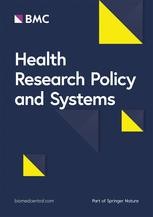Determining quantitative targets for public funding of tuberculosis research and development

Citation: Walwyn, D.R. Determining quantitative targets for public funding of tuberculosis research and development. Health Res Policy Sys 11,10 (2013). https://doi.org/10.1186/1478-4505-11-10
Abstract: South Africa’s expenditure on tuberculosis (TB) research and development (R&D) is insignificant relative to both its disease burden and the expenditure of some comparator countries with a minimal TB incidence. In 2010, the country had the second highest TB incidence rate in the world (796 per 100,000 population), and the third highest number of new TB cases (490,000 or 6% of the global total). Although it has a large TB treatment program (about $588 million per year), TB R&D funding is small both in absolute terms and relative to its total R&D expenditure. Given the risk and the high cost associated with drug discovery R&D, such neglect may make strategic sense. However in this analysis it is shown that TB R&D presents a unique opportunity to the national treasuries of all high-burden countries. Using two separate estimation methods (global justice and return on investment), it is concluded that most countries, including South Africa, are under-investing in TB R&D. Specific investment targets for a range of countries, particularly in areas of applied research, are developed. This work supports the outcome of the World Health Organization’s Consultative Expert Working Group on Research and Development: Financing and Coordination, which has called for “a process leading to the negotiation of a binding agreement on R&D relevant to the health needs of developing countries”.
Author(s): Health Research Policy and Systems
Year: 2013
Language: English
Region(s): SOUTH AFRICA
Resource Type: Journal Articles
Source: Other
